3 Important Steps to Engage Students in Lessons
Have you ever found some of your students off task during your amazing science lessons, and wondered, “How can I engage students in my lessons?” Well, you are not alone! There are some students who just LOVE Science and will be glued to everything you say. But then there are others who are disengaged and in their own world. Let’s explore ways to increase student engagement and reach all of our learners.
In This Post
We will look at ways to increase student engagement through brain based strategies. We will go over different types of activities in classroom that will have students participating and learning!
No matter what you are teaching, be sure to use these strategies each day. Grab your free guide 5 Daily Must-Do Routines to Run Your Classroom Like a Pro by clicking this link or entering your email address to the right.
Disclosure: This post contains some affiliate links for your convenience. As an Amazon Associate I earn from qualifying purchases with no cost to you.
How do you engage students?
You will need a variety of activities in classroom and brain based strategies ideas. You should also know some of your students’ interests and learning styles. And be sure you plan the strategies you will use.
One of the main types of lessons we tend to “lose” some of our students is during the whole group instruction. You can use my framework “GROW” to help plan lessons that include different types of activities that focus on brain-based strategies.
GROW stands for:
G– Goals and Objectives
R– Relevance and Connections
O– Options (Learning Styles & Brain Based Strategies)
W– Work (Meaningful, independent, cooperative)
The “ROW” parts of GROW are geared towards intentionally planning out your student engagement strategies using brain based strategies and incorporating activities that reach the different types of intelligences or parts of the brain. I will go into more detail throughout this post.
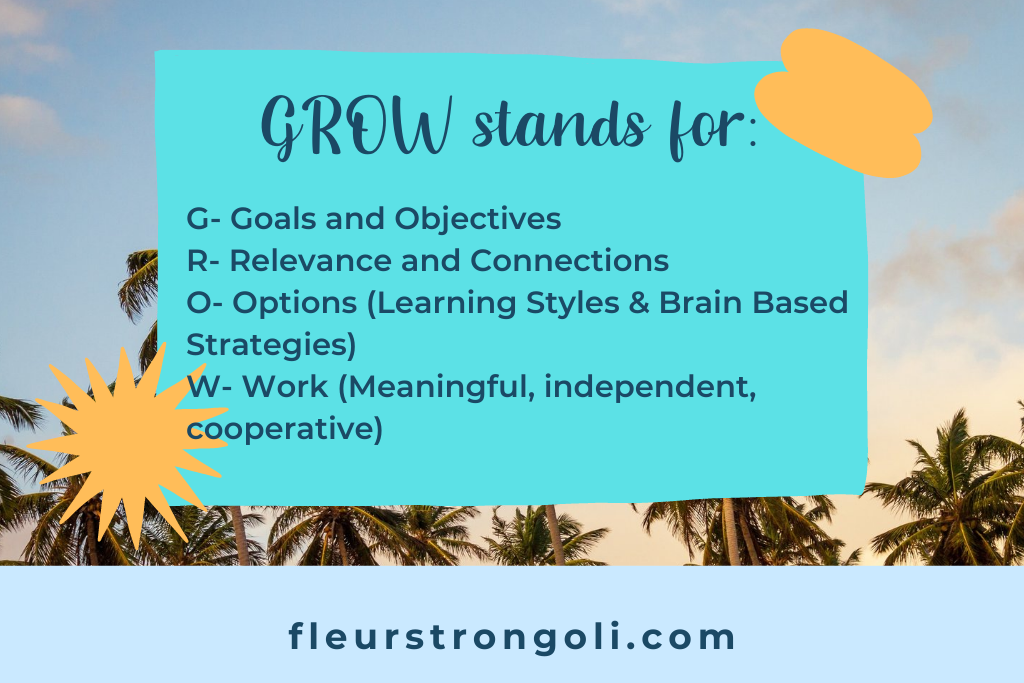
Brain Based Strategies to Reach Every Learner and Engage Students
We will break down GROW, well “ROW” and I will show you some brain based strategies for the classroom and different types of activities to increase student engagement.
R- Relevance and Connections (Engages the Students and their Brains)
Did you know that when you access your students’ background knowledge that you are helping them make neural connections? This step is SO important because the neurons will have something to link to when learning new concepts. Connecting to their prior knowledge or experiences will help make neural connections in the brain when learning a new concept.
A question to consider when planning your lessons are: “How does this connect to students’ background knowledge and to real life?” This is why it’s so important to know your students so you can easily find ways to connect the content you teach to their experiences or background knowledge.
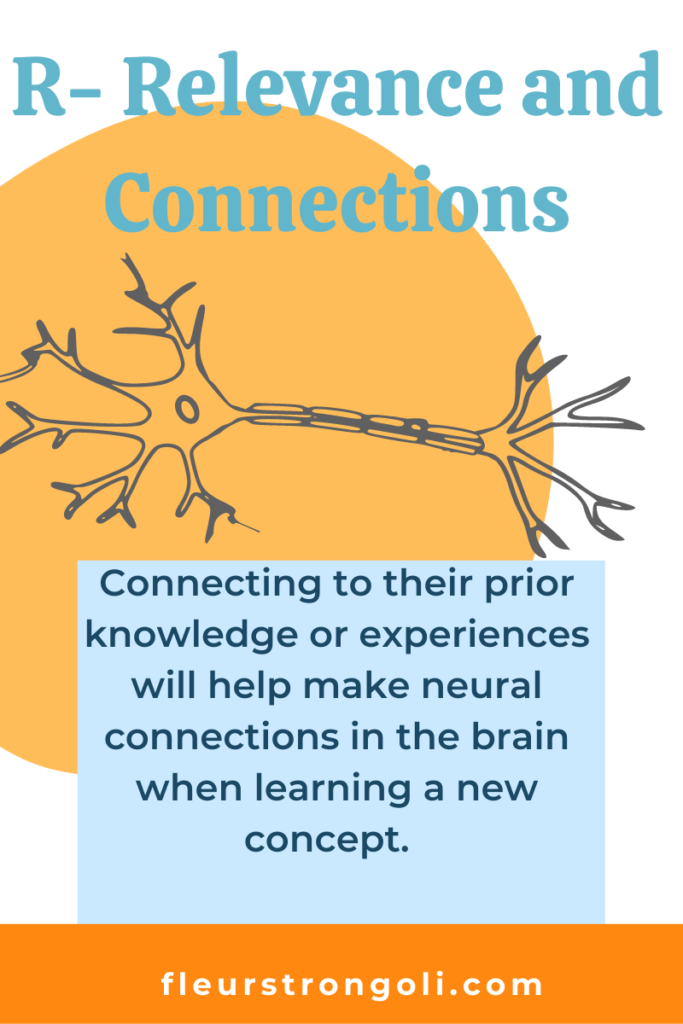
O- Options (Learning Styles & Brain Based Strategies for Student Engagement)
When planning your lessons and activities, consider how to differentiate Science lessons so that all students benefit. During whole group instruction, it is important for students to have brain breaks, time to process new information, and time to discuss information with their peers.
Brain Breaks
When students have brain breaks, it allows for movement and time for their brains to create more connections with the material you are giving them. If students are sitting for long periods of time, they should have some type of movement brain break every 15-20 minutes. I like to put a slide in my Power Points that gives them a brain break. That way it is built in every few slides. It also helps me to break up my lesson, because I know I can keep on teaching all period.
There are many types of brain breaks out there. When I am teaching, I like to incorporate brain breaks that include the content I am teaching. One of my favorite brain breaks from the book, Refocus and Recharge is “Air Write”. Students stand up and use their fingers to write vocabulary words in the air. It’s a simple movement brain break that has them focusing on the vocabulary words. I’ve created different slides that I insert into my lessons. You can get your Brain Based Strategies PPT here to include a variety of brain breaks and strategies in your slide shows.
Time to Process New Information
When you give students time to think and process information, you are allowing their brains to find and create connections to their long term memory. This is such a vital step in brain based learning. In the book, Uncommon Sense Teaching, they suggest that students have a 3-5 minute break after 25 minutes of learning or work to allow students’ brains to process information and make connections on their own. In the classroom, this could include bathroom breaks, walk in the hall, chatting with friends, or drawing. Whatever activity you choose, it needs to be unrelated to the work they are doing. I highly suggest this book.
Time to Discuss Information with their Peers
Students also need time to discuss information with their peers. This also allows their brains time to process, make connections, and retrieve information they are learning. It also gives students opportunities for different or new ideas.
A simple way to do this is to incorporate it into your lessons or your slide shows. I have discussion slides that I put into my slide shows that prompt students to talk with a partner about a topic in our lesson. These slides are also included in the Brain Based Strategies PPT.
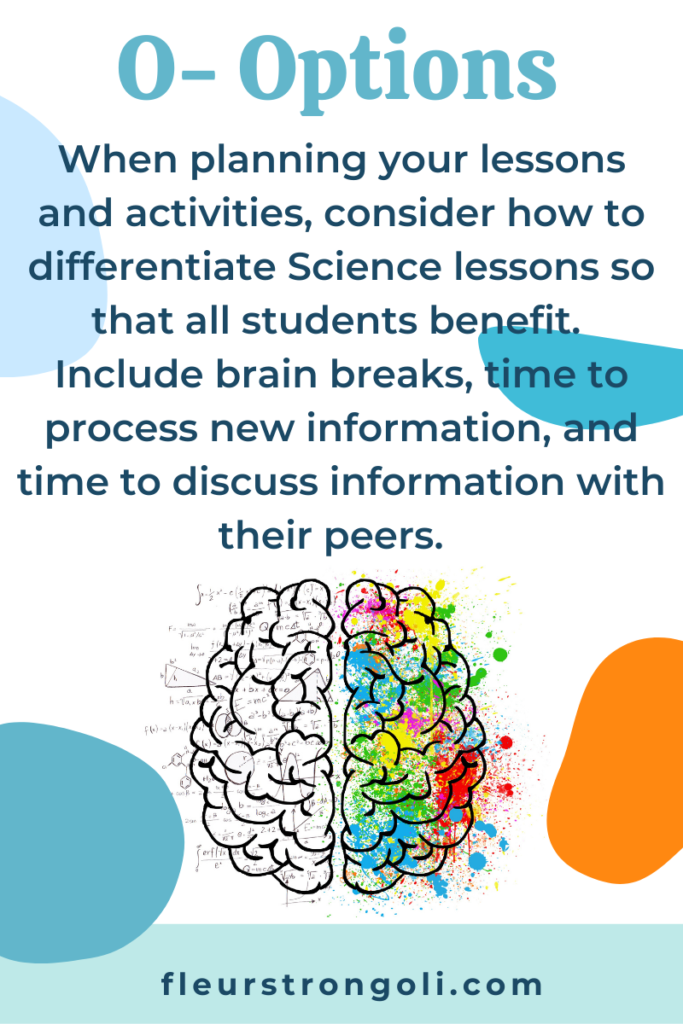
W- Work (Meaningful, Independent, Cooperative Assignment to Engage Students)
The assignments students complete should be meaningful and related to the objectives and standards. A way to make it meaningful is to consider students’ interests and different parts of their brains. There should also be a mix of independent learning and cooperative learning.
Multiple Intelligences and Interests
It’s important to offer a variety of methods to reach your students and different parts of their brains. It’s also a good idea to lean into their interests as much as you can.
Independent and Cooperative Learning
Students should complete work individually as well as cooperatively. When working on assignments, they are able to strengthen the connections in their brains by retrieving information that has been taught.
There are many different types of assignments that will engage students that are not worksheets. Students can practice concepts through labs, stations, choice boards or menus, games, computer programs, and projects.
With the variety of activities, the brain is engaged and growing! Their neurons are making connections when retrieving and working with information, their right and left brains are being utilized and strengthened, and when playing games, dopamine increases.
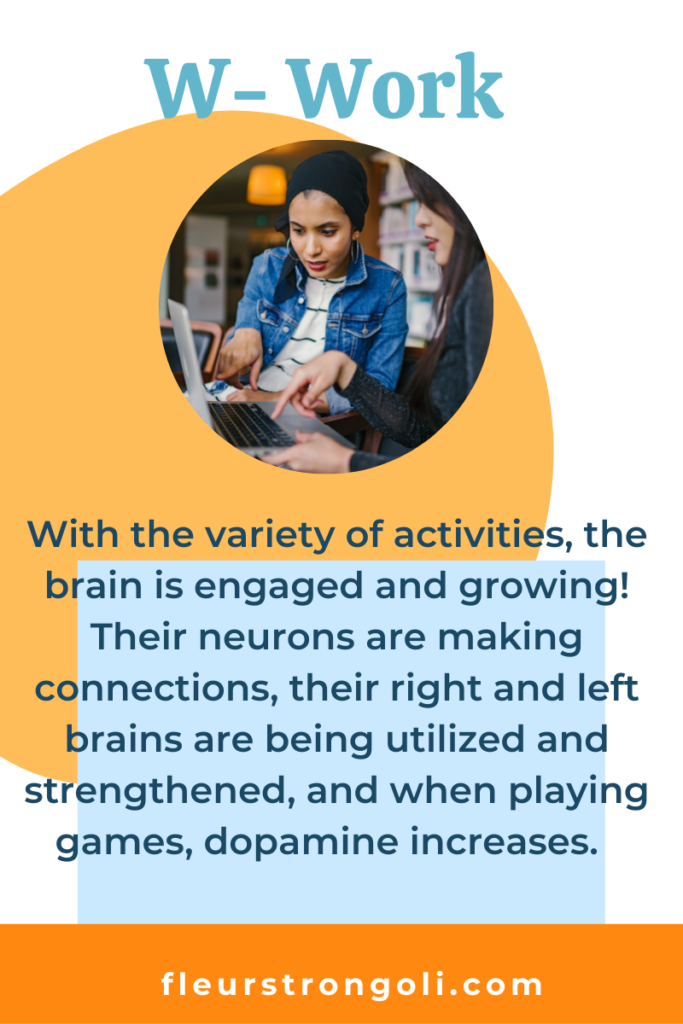
Wrap Up
We went over some quick, simple strategies you can do to increase student engagement in your classroom. Plan and be intentional with your strategies during your whole group lessons and activities. When using brain based strategies, the brain is making connections and growing when students are engaged in their learning.
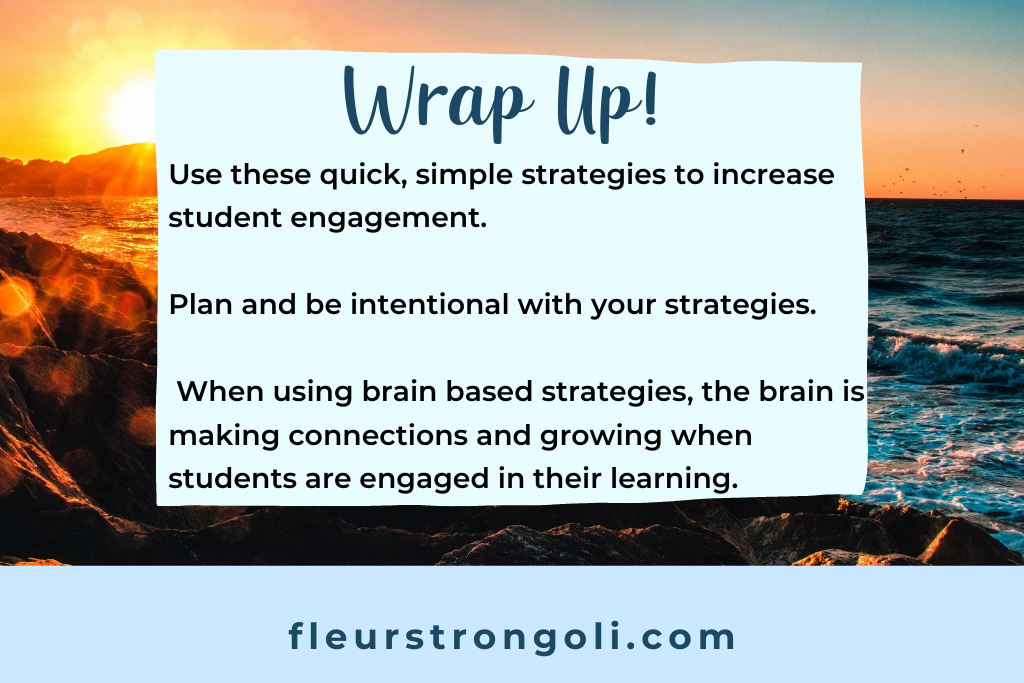
Your Turn
Reflect on how you are already engaging students in your classroom. Choose an area you’d like to improve student engagement. Plan intentionally for strategies to use in your lessons and activities.
Share your journey with me! Comment below or connect with me on Facebook or Instagram!
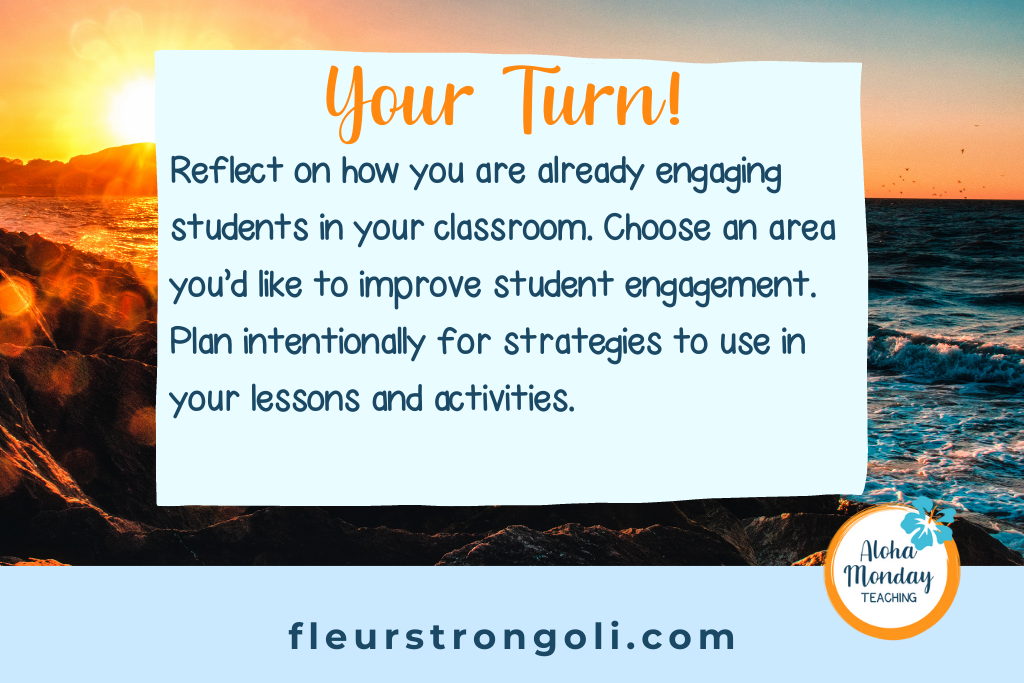

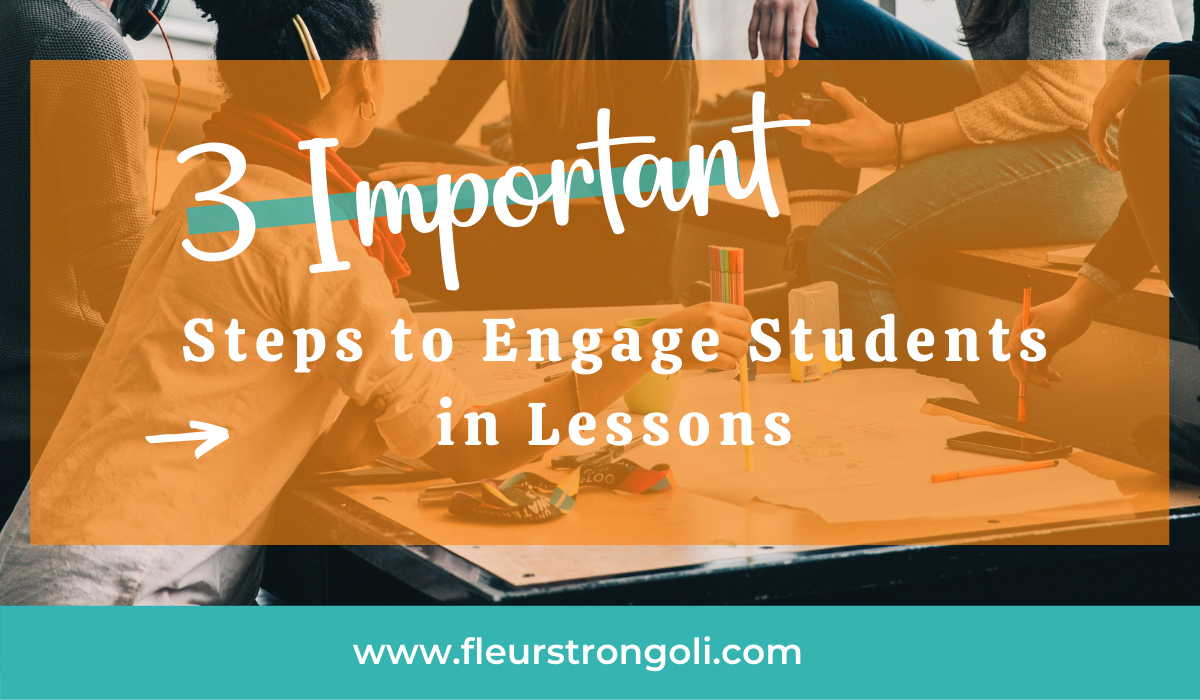
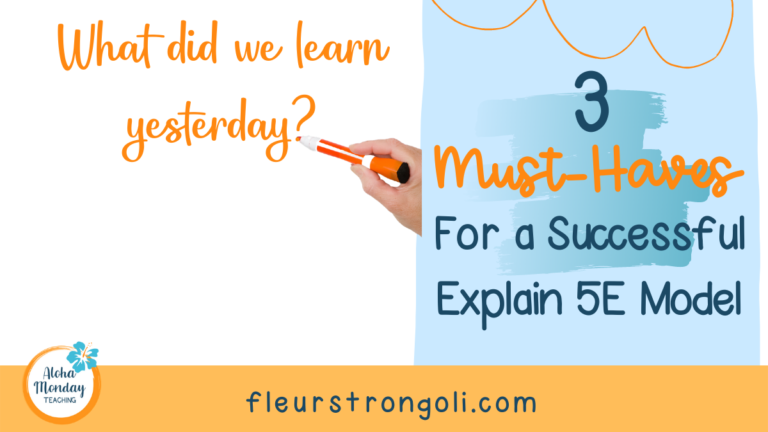
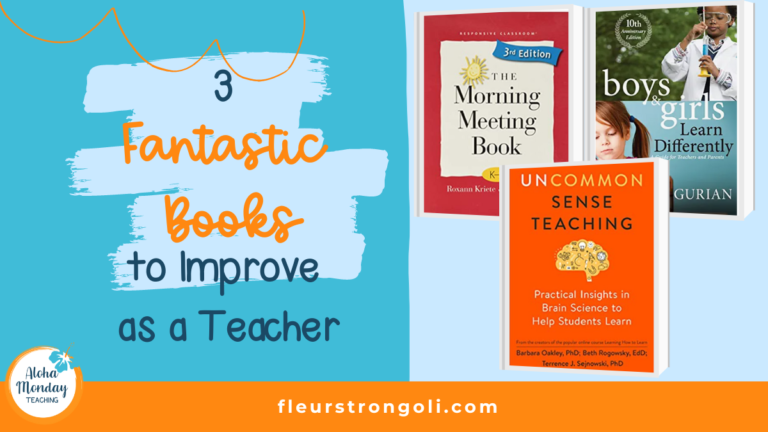

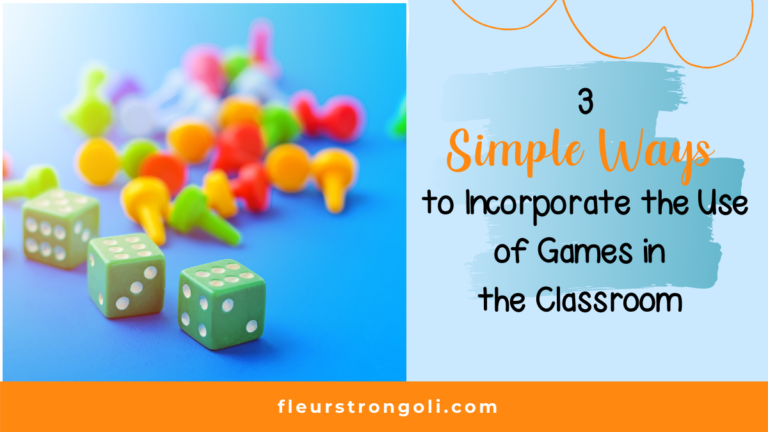
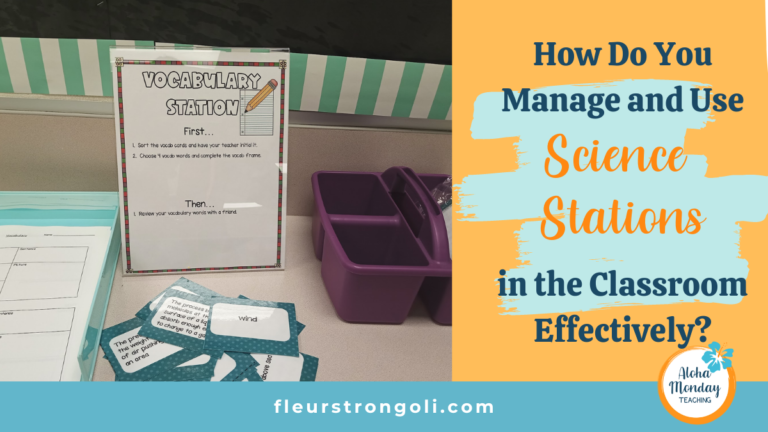
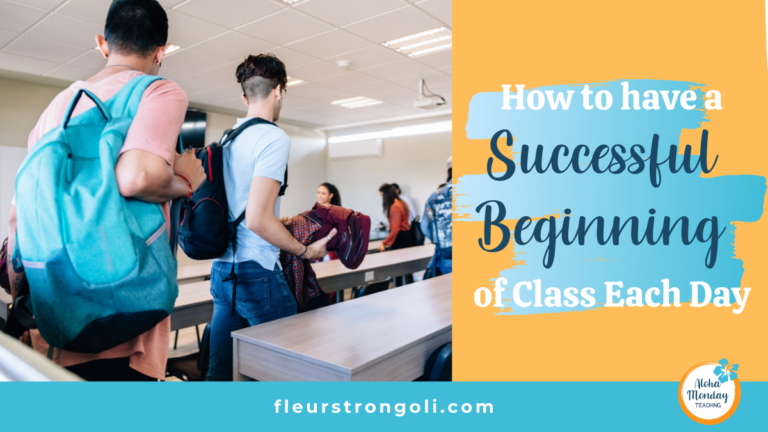
8 Comments